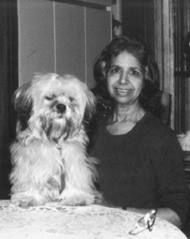





|

|
He did well in high school. His success in high school brought him recognition from his teachers and peers. He felt that he was one of them. " In
the Duncan high school, I went up to grade eleven. At the end of the eleventh year, they were picking somebody to be president of the Council
for grade twelve, and my name was suggested. I nearly got it. Apparently there was some opposition from some of the parents in the
community, that an East Indian should become the president of the Student Council in Duncan.
" Another thing happened at that time, the war was on and I was in Army Cadets. It was part of the school program. I was a sergeant there, and
taking the platoon out to do their regular march I’d be the officer and I’d be giving the commands and they’d be obeying them. To me it didn’t
matter and to the students it didn’t matter but it mattered to the community, that I was in charge. There were some complaints to the school
about that. "
After finishing high school in Victoria, Dedar Sihota took a year off to work at the Hillcrest mill in order to finance his education at UBC. In 1949
he graduated with a Bachelor of Arts degree, majoring in economics and psychology.
Sihota tried unsuccessfully to get a job in business, for at this time it was still difficult for East Indians to break into the professions and white
collar jobs. As had been predicted, he ended up working in a mill, only now operating a machine, the resaw.
Later, on the advice of a friend, he went to normal school and got his teaching degree, and became the first Sikh teacher in Vancouver at

|
Dr.Sarjit Kaur Siddoo

|
Renfrew School. His career in education eventually encompassed elementary and high school teaching, counselling and vice principal, principal
and administrative duties at the district level. In his own words, getting an education had been worthwhile, with " never a dull moment. "
Kapoor Singh, a mill owner, and his wife Besant Kaur had their children’s lives planned even before they were born. Education was a vital part
of the life plan for their daughters Jagdis and Sarjit. Dr. Sarjit Kaur Siddoo explains: " Both Mother and Father had decided that if they had any
children – and that wasn’t likely since Mother was almost forty when we were born – they decided that their children would be doctors. They
would get their education here, then go back to India and serve in their village. As well they would get involved in the freedom movement [for
an independent India]. That’s how we were brought up. "
|
cont...
[p.3]









|







